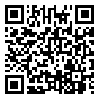Volume 12, Issue 4 (10-2022)
Iran J Ped Hematol Oncol 2022, 12(4): 246-262 |
Back to browse issues page
Department of Biology, Faculty of Science, Yazd University, Yazd, Iran
Abstract: (642 Views)
Background: About 10-20% of children suffering from acute lymphoblastic leukemia (ALL), experience a relapse, which is a major cause of their death. Purine nucleotide analogs are frequently prescribed to maintain the treatment of ALL. Cytosolic 5´-nucleotidase (NT5C2) catalyzes the 5´ dephosphorylation of purine analogs. Gain-of-function mutations in the NT5C2 gene result in resistance to the treatment with purine analogs and subsequently in the relapse of the disease.
Materials and Methods: In this descriptive study, bioinformatics tools were used to assess the effect of single nucleotide polymorphisms (SNPs) in the NT5C2 gene on the function and structure of the protein. So, 352 missense variants were retrieved from the NCBI database and analyzed by SIFT, PROVEAN, PMut, PANTHER, PolyPhen2, SNPs & Go, and PhD-SNP servers. Then, structural evaluations were performed using HOPE, NetSurp-2.0, and PyMOL. Moreover, stability and evolutionary preservation were assessed by I-Mutant2.0 and ConSurf, respectively.
Results: As many as 31 nsSNPs were predicted to be affecting the protein function and stability. Also, the native residues were found to be evolutionarily preserved. The structural evaluation demonstrated that a change of hydrophobicity, flexibility, size, charge, or surface accessibility due to 24 nsSNPs would lead to the change of noncovalent interactions and then the conformation of the protein.
Conclusion: Identification of biomarkers is significant in the prediction of relapses in ALL children. In this study, bioinformatics tools served to identify 24 high-risk deleterious nsSNPs in the NT5C2 gene. These mutations can be used to predict resistance to chemotherapy and relapse in ALL patients.
Materials and Methods: In this descriptive study, bioinformatics tools were used to assess the effect of single nucleotide polymorphisms (SNPs) in the NT5C2 gene on the function and structure of the protein. So, 352 missense variants were retrieved from the NCBI database and analyzed by SIFT, PROVEAN, PMut, PANTHER, PolyPhen2, SNPs & Go, and PhD-SNP servers. Then, structural evaluations were performed using HOPE, NetSurp-2.0, and PyMOL. Moreover, stability and evolutionary preservation were assessed by I-Mutant2.0 and ConSurf, respectively.
Results: As many as 31 nsSNPs were predicted to be affecting the protein function and stability. Also, the native residues were found to be evolutionarily preserved. The structural evaluation demonstrated that a change of hydrophobicity, flexibility, size, charge, or surface accessibility due to 24 nsSNPs would lead to the change of noncovalent interactions and then the conformation of the protein.
Conclusion: Identification of biomarkers is significant in the prediction of relapses in ALL children. In this study, bioinformatics tools served to identify 24 high-risk deleterious nsSNPs in the NT5C2 gene. These mutations can be used to predict resistance to chemotherapy and relapse in ALL patients.
Type of Study: Research |
Subject:
Heart
Received: 2022/01/9 | Accepted: 2022/08/2 | Published: 2022/10/18
Received: 2022/01/9 | Accepted: 2022/08/2 | Published: 2022/10/18
| Rights and permissions | |
 |
This work is licensed under a Creative Commons Attribution-NonCommercial 4.0 International License. |




